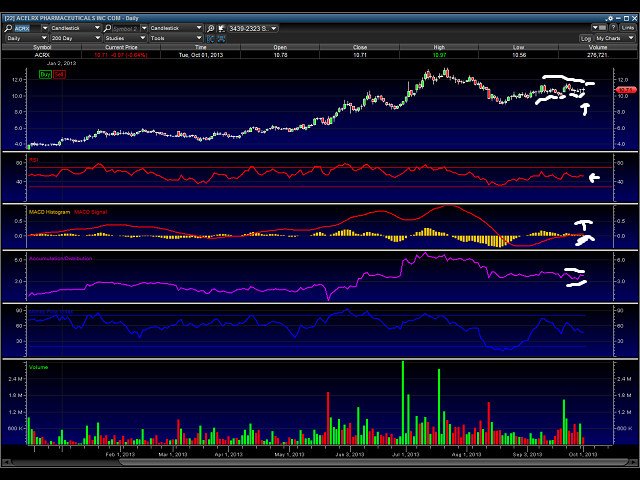I have been hearing some strong acquisition rumors concerning AcelRX (ACRX), much like I heard about Obagi last year. The rumors on Obagi turned out to be correct, as the company was sold last year to Valeant (VRX) for $24 a share. We believe there is merit to the current rumors surrounding AcelRx
- Technology: ZALVISO Sublingual Sufentanil Nanotab System
Acel is developing Zalviso, which is designed to address intravenous patient controlled analgesia (IV PCA) problems, which can cause harm following surgery. This includes side effects of the invasive IV route for morphine delivery and inherent potential programming and delivery errors associated with the complexity of infusion pumps. Zalviso uses the generic pain medication sufentanil, which is a common anesthetic agent. The difference is in the method of delivery through AcelRx’s patented NanoTab technology. Patients receive their dosage of sufentanil sublingually (under the tongue) through this system, instead of the traditional IV drip. AcelRx emphasizes that sublingual delivery of sufentanil through its Nanotab system, which allows for more prolonged plasma levels relative to IV, a lower maximum concentration, as well as a more consistent concentration during dosing.
The post-operative pain market in the United States, Europe and Japan has been growing steadily over the last few years and is expected to reach $6.5 billion by 2018. Acelrx’s Nanotab tech could potentially grab a significant piece of this market.
AcelRx has been studying its Sufentanil Nanotab (patient-controlled analgesia) system in several clinical trials for the treatment of acute and breakthrough pain, particularly in a post-operative hospital setting. Three Phase III trials have been completed rendering excellent results. Topline data from the final pivotal trial treating pain after knee or hip surgery was released in May.
Phase III data was impressive in several ways. Patients experienced better, longer lasting, and more complete pain relief after orthopedic surgery. Additionally, nurses reported that it was much easier to use the Nanotab system. Traditional IV PCA is known for its confusing administering program and patient deaths have even resulted in a small percentage of cases.
The system also eliminates the need for and IV, which decreases patient mobility within the hospital, as well as increasing the chance for IV-related infections. These are huge advantages for both patients and nurses.
As for patients, there are meaningful advantages to using the Nanotab system over an IV PCA. Most importantly, sufentanil provides a faster onset of pain relief. Morphine is associated with some very nasty side effects, but those side effects have been reduced drastically with the use of sufentanil because it is a lot more potent and has much better sedative properties.
Phase III data showed statistical significance in all of these areas, while also reducing adverse effects. Not only did Phase III data show a prolonged relief of pain, but also a more durable relief with fewer gaps in between dosing.
Based on the chart, I see short-term move to a minimum of $11.50 on ACRX, possibly $12. We still maintain a short term move to a new 52-week within three months on ACRX, and our opinion on a short term acquisition of the company remains.
Above, I have drawn lines showing the wedge with higher lows and higher highs in a tight range. The chart is almost identical to INSM from the current point, and INSM hit $16. We feel within three months, ACRX hits $14 or higher and within a few trading sessions, $11.50 or higher. Note the purple Accumulation line is tightening as well. When indicators tighten like this in an up channel, almost always it means a higher price can be expected.
